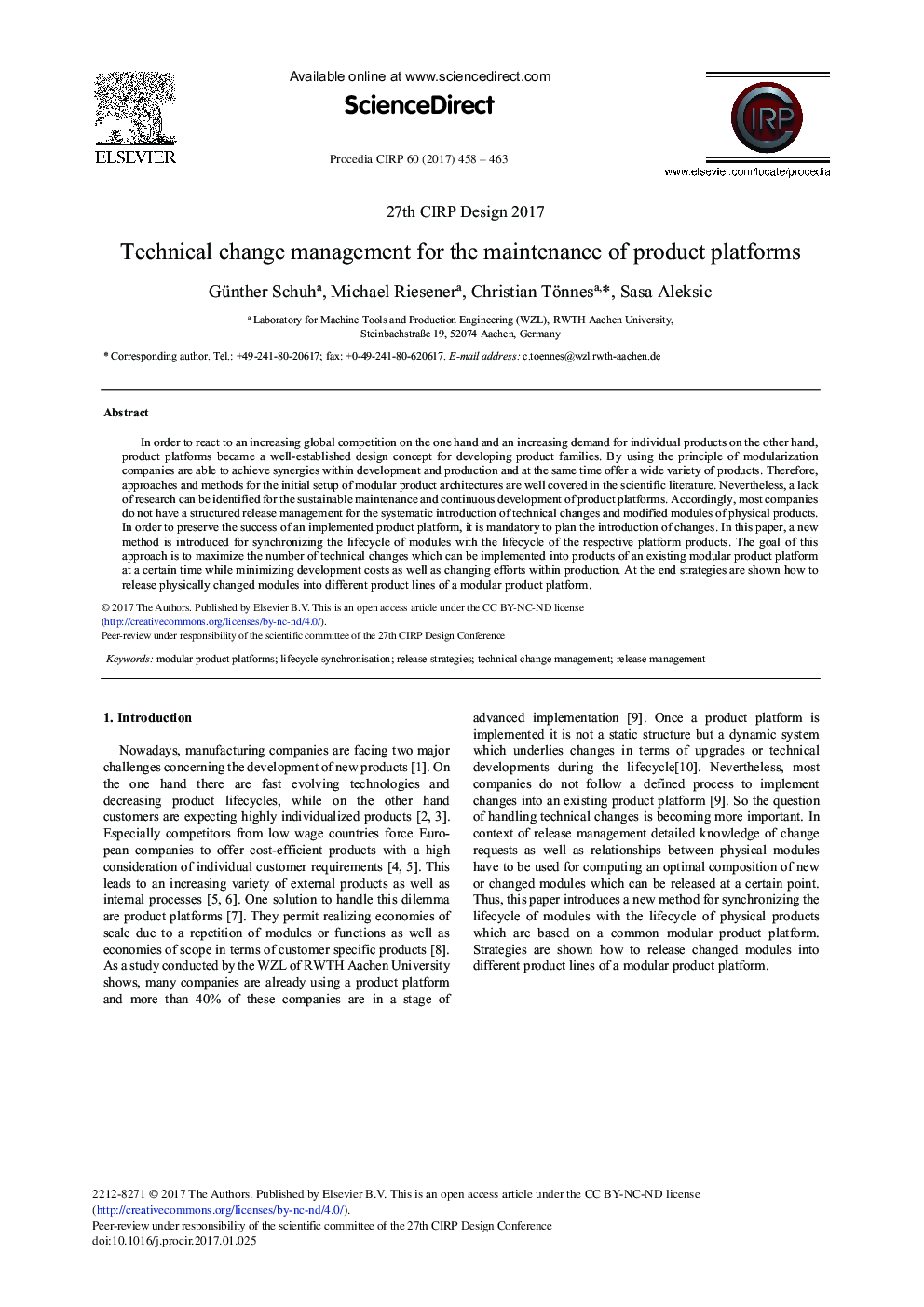| Article ID | Journal | Published Year | Pages | File Type |
|---|---|---|---|---|
| 5470651 | Procedia CIRP | 2017 | 6 Pages |
Abstract
In order to react to an increasing global competition on the one hand and an increasing demand for individual products on the other hand, product platforms became a well-established design concept for developing product families. By using the principle of modularization companies are able to achieve synergies within development and production and at the same time offer a wide variety of products. Therefore, approaches and methods for the initial setup of modular product architectures are well covered in the scientific literature. Nevertheless, a lack of research can be identified for the sustainable maintenance and continuous development of product platforms. Accordingly, most companies do not have a structured release management for the systematic introduction of technical changes and modified modules of physical products. In order to preserve the success of an implemented product platform, it is mandatory to plan the introduction of changes. In this paper, a new method is introduced for synchronizing the lifecycle of modules with the lifecycle of the respective platform products. The goal of this approach is to maximize the number of technical changes which can be implemented into products of an existing modular product platform at a certain time while minimizing development costs as well as changing efforts within production. At the end strategies are shown how to release physically changed modules into different product lines of a modular product platform.
Keywords
Related Topics
Physical Sciences and Engineering
Engineering
Industrial and Manufacturing Engineering
Authors
Günther Schuh, Michael Riesener, Christian Tönnes, Sasa Aleksic,
